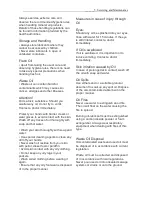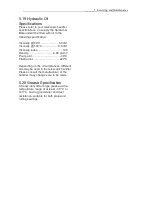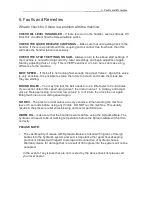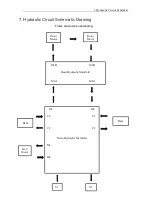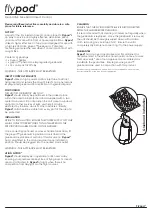
_______5. Servicing and Maintenance
The mounting is to be on the rails
identified above either side of the unit
vertical centre line using bolts capable of
withstanding the maximum working load.
The unit will be lifted using
these attachments and all bolts
and lifting devices must be
capable of taking the required
loadings.
5.4 Preparing for Storage
Put the unit in a dry sheltered position.
Clean down and grease all points provided
with grease nipples. Clean and cover the
hydraulic connections. Check conditions
regularly to see that there has been no
noticeable deterioration in the unit.
5.5 Greasing the Bearings
These are greased by use of the grease
nipples provided using the appropriate
grease. There are nine bearings on the
belt rollers and one at the bottom of each
of the spreading rotors. It is important not
to over grease.
5.6 Hydraulic Hose Inspection
On all hydraulic hose for operating
conditions, check outer hose cover for: no
cracks, bubbles, deformation, wear or
kinking, no distress on intersection
between hose and end fitting and no fluid
weeping for leaking.
5.7 Changing a Hydraulic
Hose
Always use suitable eye and hand
protection during this and any related
hydraulic handling operations.
First of all, depressurise the system by
carefully loosening a connection ensuring
that any oil is carefully mopped up.
Remove and fit the new hose ensuring
that the hydraulic connections are tight
and that the hose is securely attached to
the unit. When starting for the first time
after changing a hose check for leaks.
Dispose of any oil, old hydraulic pipes and
cleaning equipment in a safe manner.
Hydraulic fluids under pressure
can harm the skin and eyes and
cause serious injury or death. If
any fluid is injected into the skin,
it is important that you see a
doctor immediately.
Follow the safety datasheet for the
hydraulic oil supplied with the telescopic
handler.
5.8 Changing a Control Unit
The basic process and safety
requirements are the same as for a
hydraulic hose. When refitting the unit
ensure that all the bolts are tightened to
the correct torque and the hydraulic
connections are tight and do not leak.
5.9 Changing a Belt
Please read all instructions
before commencing work.
1.
Raise the spread a bale
approximately 300mm from a level
clean surface, preferably a
concrete/workshop floor. Support
spread a bale with suitable props.
Ensure handler is switched off and
key is removed.
2.
Slacken off belt tension using the two
adjusters at the rear until the drive
roller is fully forward in its slot.
3.
Using a sharp knife cut and remove
the old/damaged belt.
4.
Thread new belt from the top down
around front and drive roller.
5.
Position joiner clip in middle at the
bottom of the machine. Using a piece



















